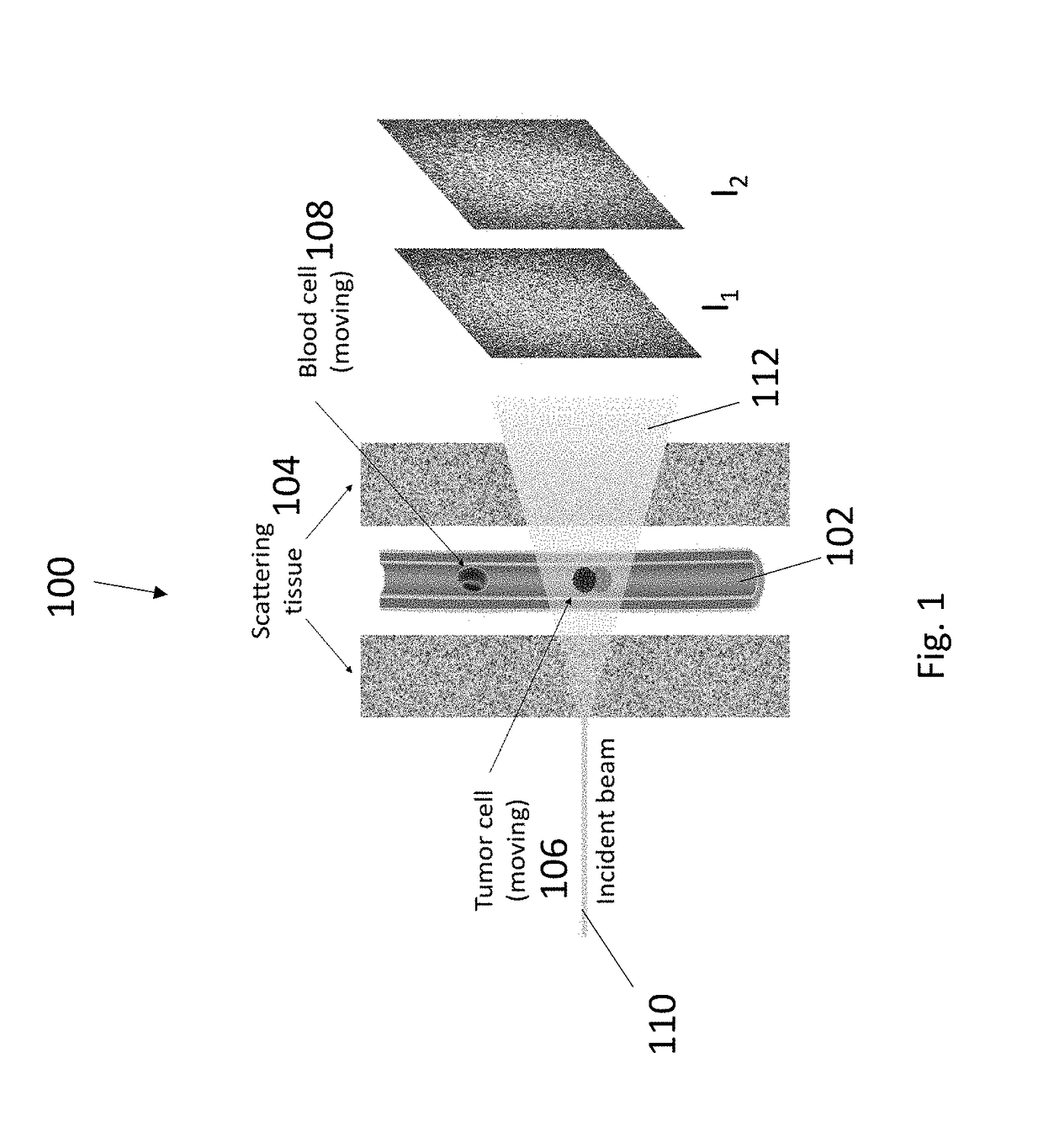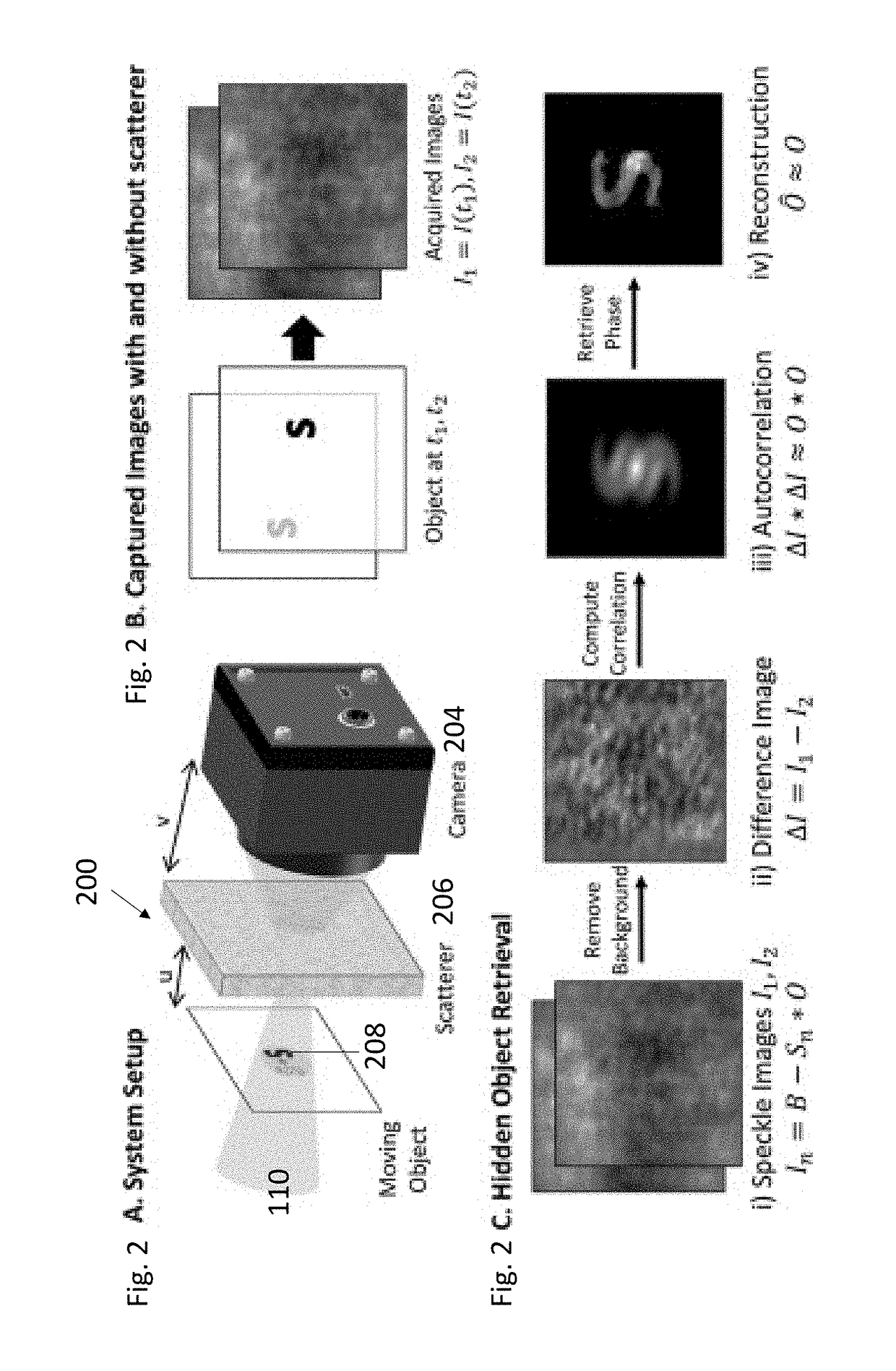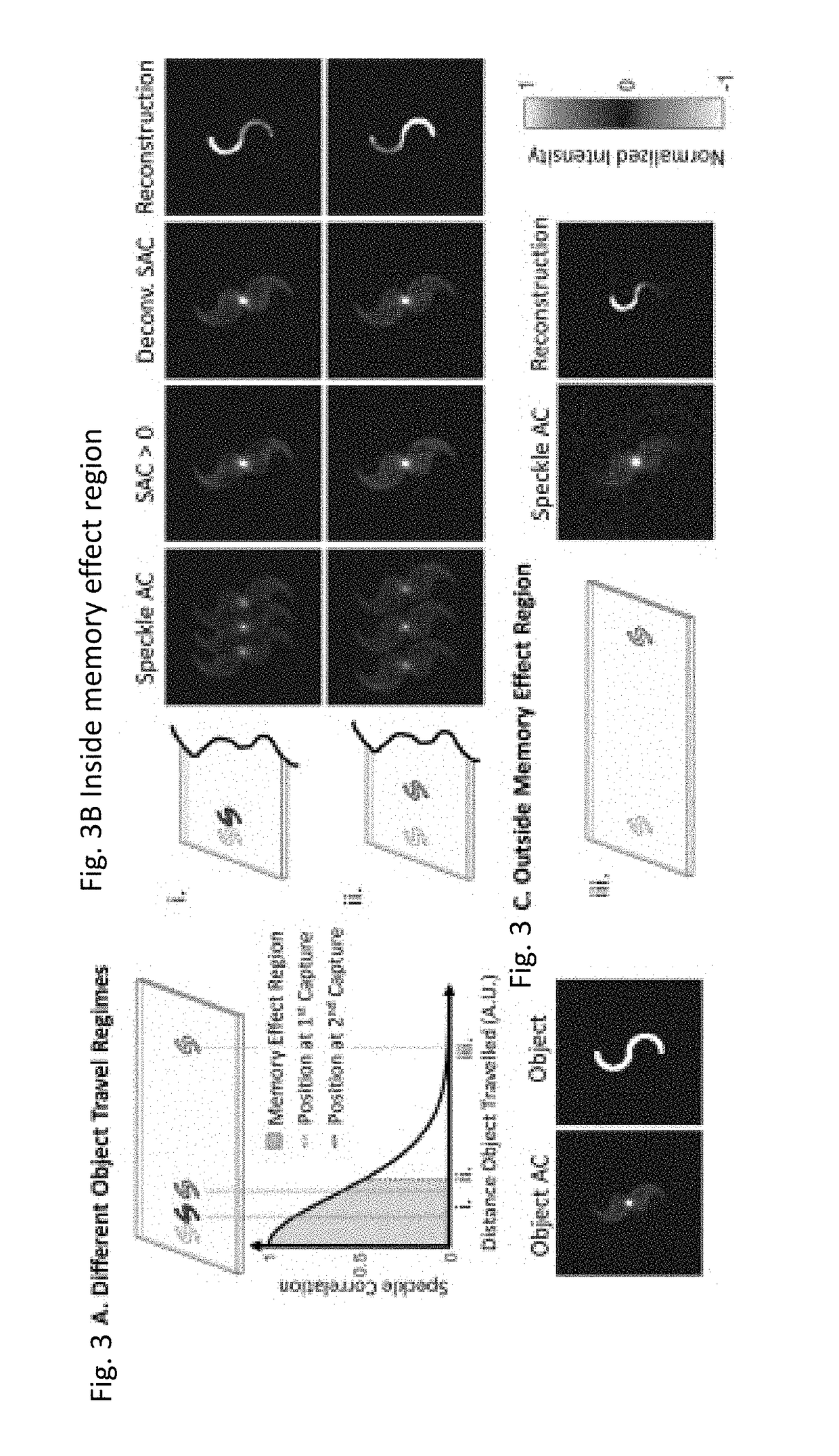Noninvasive, label-free, in vivo flow cytometry using speckle correlation technique
a correlation technique and flow cytometry technology, applied in the field of flow cytometry, can solve the problems of limiting the depth at which we can reliably perform flow cytometry, reducing the accuracy of flow cytometry, and challenging optical imaging
- Summary
- Abstract
- Description
- Claims
- Application Information
AI Technical Summary
Benefits of technology
Problems solved by technology
Method used
Image
Examples
first example
[0052]FIG. 2A illustrates an example apparatus 200 for performing SCFC, illustrating the scattered light 202 is detected by a high-resolution camera 204 that is placed at a distance v from the scattering media 206 and wherein the moving object 208 is at a distance u from the scatterer. The resultant object will have an image size dictated by the magnification of the system, M=−v / u.
[0053]FIG. 2B illustrates captured images with and without the scatterer.
[0054]FIG. 2C illustrates the hidden object can be retrieved from the seemingly random speckle images by taking advantage of inherent angular correlations in the scattering pattern. FIG. 2C(i) shows each captured image In consists of a background, B, subtracted by the imaged object, where the imaged object is the convolution of the PSF of the scattering media, S, and the object pattern, O. FIG. 2C(ii) shows that, although the background signal dominates over the object, it can be subtracted out by taking the difference between the two...
case 1
Travels Distance Where C(Δx)Δ1
[0058]In the case where the object travels a small distance (such that C(Δx)≈1), we have
S2(xi)≈S1(xi+Δxi) (7)
[0059]where x=(x, y), xi=(xi, yi) are coordinates in the object plane and image plane respectively, Δx is the distance the object traveled in the object plane, and Δxi=MΔx. We can equivalently consider the PSF to be the same in both captures and have the object travel between captures.
[0060]That is,
O2=O(xi+Δxi), (8)
ΔI=S*[O(xi)−O(xi+Δxi)], (9)
and
ΔI*ΔI=2A(xi)−A(xi+Δxi)−A(xi−Δxi). (10)
[0061]where A=O*O is the object, autocorrelation (OAC). The SAC contains three copies of the OAC: a positive copy centered at x=(0, 0), and two negative copies shifted by an amount commensurate with the object travel distance [FIG. 5B, “Speckle AC”)].
[0062]Since C(Δx)≈1 when Δx≈0, the object may travel a distance shorter than the extent of its autocorrelation. In this case, the SAC will yield positive and negative copies of the OAC that overlap [FIG. 3Bi]. The OAC ...
case 2
Travels Distance Where C(Δx)>0.5
[0063]In the regime where the object travels within the angular ME range (C(Δx)>0.5), S1 and S2 are correlated. To highlight the impact of the degree of correlation C(Δx) on the SAC, we can mathematically represent S2 as:
S2=C(Δx)S1(xi+Δxi)+√{square root over (1−[C(Δx)]2)}S, (11)
[0064]where S is a speckle intensity pattern that is uncorrelated with S1. The scatter PSFs in the equation above are mean-subtracted speckle intensities. Representing S2 in the form above allows us to preserve speckle intensity statistics (that is, the speckle intensity variance and mean satisfy V[S1]=V[S2] and E[S1]=E[S2] respectively.)
[0065]Using Eq. (11), Eqs. (4) and (5) become
ΔI=(S1−C(Δx)S1(x1+Δxi)−√{square root over (1−[C(Δx)]2)}S)*O (12)
and
ΔI*ΔI≈2A(xi)−C(Δx)A(xi±Δxi)+√{square root over (1−[C(Δx)]2)}×noise, (13)
[0066]where the last equation follows from noting that the speckle fields are a delta-correlated process and that the cross-correlation of two uncorrelated spe...
PUM
| Property | Measurement | Unit |
|---|---|---|
| decorrelation time | aaaaa | aaaaa |
| depths | aaaaa | aaaaa |
| time | aaaaa | aaaaa |
Abstract
Description
Claims
Application Information
 Login to View More
Login to View More - R&D
- Intellectual Property
- Life Sciences
- Materials
- Tech Scout
- Unparalleled Data Quality
- Higher Quality Content
- 60% Fewer Hallucinations
Browse by: Latest US Patents, China's latest patents, Technical Efficacy Thesaurus, Application Domain, Technology Topic, Popular Technical Reports.
© 2025 PatSnap. All rights reserved.Legal|Privacy policy|Modern Slavery Act Transparency Statement|Sitemap|About US| Contact US: help@patsnap.com



